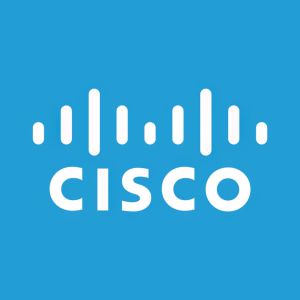Cisco: Employee Giving and Volunteerism Drives Positive Business Outcomes
By Kelly Petrich
NORTHAMPTON, MA / ACCESSWIRE / January 23, 2024 / Cisco Systems Inc.

Cisco was honored last year to win the top spot on People's 2023 List of Companies That Care, and a key factor was our employee culture of giving back.
We've been on a multi-year journey to engage our employees for positive impact at scale. Four years in, the results surprised even us. Not only did we see significant increases in donations and volunteerism to our global communities, but tangible benefits back to Cisco.
"We learned from Cisco's own business transformation to make giving back a habit."
Leveraging Business Transformation for Employee Giving
It all started with an audacious goal around 2016 to engage
The breakthrough came when we shifted to learn from Cisco's own business transformation and re-design around the question: How do we make giving back a habit? We landed on these design principles:
- Center on inclusion and make it simple for nonparticipants to take their first give back action. For example, we provided new hires with
$15 donation credits to direct to their preferred charity on their first day at Cisco. - Leverage digitization to engage at scale. From virtual volunteerism to Webex chatbots that encouraged people to donate, we deployed digital features to keep it top of mind, make it easy to get started, and keep coming back.
- Follow the data. In near real time, we tested new programs and approaches, tweaked campaigns and communications, and monitored adoption rates all to help us get the best fit for and connection with our people.
We continued to iterate through 2019, and that year we hit our goal with
Hitting our goal felt like a feat unto itself, but what came out of it was even better-increased social impact and substantial business value. Let's look at the numbers.
Leveraging Employee Giving for Social Impact
Not surprisingly, engaging at scale grew our employee volunteerism and giving exponentially. From 2016 to 2020 when we first hit
And each year that we've hit
- 400 employees and friends hiking the Camino de Santiago trail in Spain to raise funds for global cancer charities
- Six Cisco engineers designing and installing a network for homeless shelters in San Jose, California, so residents can access information and resources for a better life
- Cisco employee Daniel volunteers every week to take live calls with the Trevor Project to support LGBTQ+ youth experiencing crisis
Leveraging Social Impact for Business Value
Cisco's purpose is to Power an Inclusive Future for All, and at the heart of this is the belief that doing good for the world is good for business-and we have the data to prove that it is.
With the help of Cisco's Research and Intelligence team, we conducted a longitudinal study to explore the relationship between giving back at Cisco and individual, leader, and team performance data. We examined the first three years of Cisco's
The results were eye-opening. Compared to employees who did not take any community impact action, those who took at least one per year stayed longer at Cisco, had higher bonuses, had higher odds of promotion, and received more recognition from others.
The same held true for specific subgroups like teams, leaders, and new hires. For example, when a team collectively engaged in giving back, the whole team had higher rates of promotion and higher recognition.
Particularly compelling was that when leaders engaged in giving back, their team was more likely to give back as well. Such leaders had
Doing Good for the World is Good for Business
When we put these elements together-social impact and business value-this is the foundation for building a purpose-driven employee culture. Our journey has helped us demonstrate that making a positive impact to our world also makes an incredibly positive impact for Cisco.
And like any good story, the end is just the beginning. While we continue to engage at scale, we also invite our broader ecosystem of business partners, customers, and suppliers to join us. Check out our Partnering for Purpose blog stories for examples and contact us to share your story.
View original content here.
View additional multimedia and more ESG storytelling from Cisco Systems Inc. on 3blmedia.com.
Contact Info:
Spokesperson: Cisco Systems Inc.
Website: https://www.3blmedia.com/profiles/cisco-systems-inc
Email: info@3blmedia.com
SOURCE: Cisco Systems Inc.
View the original press release on accesswire.com








